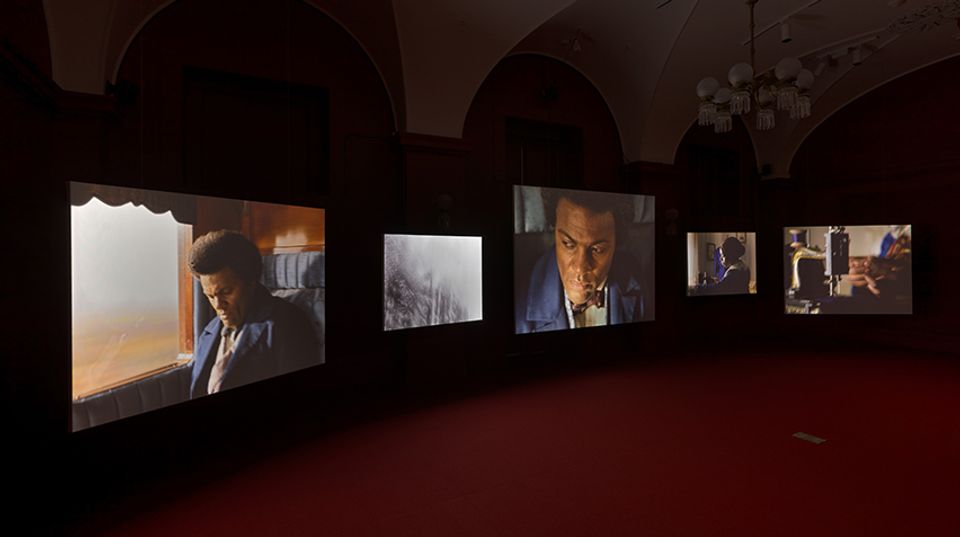
Alexis Rockman, Evolution, 1992, Oil on wood, Collection of George R. Stroemple, © Alexis Rockman, Photo courtesy of the artist.

Alexis Rockman kicked off the first in the series of "Art and Science" talks at American Art's McEvoy Auditorium in conjunction with the exhibition of his work: Alexis Rockman: A Fable for Tomorrow. The image on the screen that greeted us as we took our seats was a black and white photo of a scientist or curator at New York's Museum of Natural History creating a diorama with what looked like miniature woolly mammoths. Though the photo was from the 1950s or so, (and Rockman was born in 1962), it spoke to his lifelong interest in natural sciences and his formative years spent in that museum's galleries. His mother, a secretary for famed anthropologist Margaret Mead (that's a story in itself!), introduced Alexis to the museum and began his love for art and the natural sciences.
Exploring the "tension between nature and culture in evocative and surprising ways," Rockman took us through images of his work, often matching other artists who either served as inspiration, or walked the same path where art and nature cross. His interests in the environment, global warming, the disappearance of species, and biotechnology on the farm, made for a fascinating evening, and provided a window (or two) into his thoughts and working process. A diorama titled "Forest Floor" that he viewed as a child in the Natural History Museum, became the inspiration for his painting of the same name from 1989. The poetic drips from Morris Louis's famed Veil paintings found their way into his Weather paintings and the series called "Half/Life."
Other artists that have inspired Rockman are as varied as Philip Guston, Sigmar Polke, and Joseph Darby, whose painting, "The Age of Enlightment" from 1766, Rockman described in terms of its "spectacular retinal experience." And then there was Mierle Ukeles, who, in 1970, became the first (unsalaried) artist of the New York City's Sanitation Department. The image of a garbage truck that had been covered in a mirror brought home the idea that we need to see ourselves reflected in all parts of the environment, from those we treasure to those we toss away.
To find out more about Alexis Rockman's inspirations watch our webcast of his talk.
The series continues with J.D. Talasek, director of cultural programs at the National Academy of Sciences, on February 9. The exhibition runs through May 8, 2011.

















